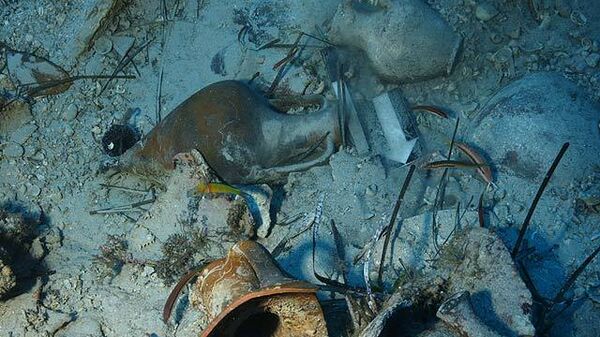A Swedish diver may have found the world's oldest drinkable sparkling wine when he recovered several bottles amid wreckage of a 230-year-old ship in the Baltic Sea, Swedish and Finnish media reported.
Fishermen of Finland's Aland archipelago told Christian Ekstrom of the sunken ship several years ago, but the diver thought the vessel was too small and did not worth the risk of a 55-meter dive. He, however, became interested in the ship later and made a dive earlier this week.
"We could not identify the ship. The reason why I picked up a bottle was because we could establish the period for which bottles of that kind are typical. My friend looked through a list of bottles at home, and we could quickly establish that it was from the 1780s," he told Swedish tabloid Aftonbladet.
Ekstrom said that the only way to find out whether the champagne was drinkable or not was simply to try it.
"Last year a bottle of champagne from 1825 was opened, in the presence of prominent guests and the world's top sommeliers. Imagine me standing in a boat and drinking champagne 230 years old," Hufvudstadsbladet, a Swedish-language newspaper published in Finland, quoted the diver as saying.
The diver said the champagne tasted "totally awesome."
"The drink was of incredibly high quality. It was delicious, with small fine bubbles," he said.
Experts told Aftonbladet that due to a special cork design, the champagne was most likely to be of the world-famous Veuve Clicquot brand.
"It was lying on the ocean floor at the depth 55 meters, where there is constant temperature of four degrees [Centigrade], and it is absolutely dark. It is the best storage conditions. Pressure inside the bottle remains unchanged, and prevents water and salt from getting into [the bottle]. Only sparkling wine can survive in salty water," a restaurateur and wine expert, Carl Jan Granqvist, said.
"Undoubtedly, it is the world's oldest champagne. It is an extreme treasure. I estimate its value to be at least half a million of Swedish crowns [$68,000] per bottle," said another expert, Richard Juhlin.
Some 30 bottles of the priceless drink are still scattered amid the wreckage, and the location of the sunken vessel is kept secret to prevent possible looting.
The fate of the bottles is yet to be determined. According to local laws, objects older than a century are considered a relic and belong to Aland.
"We will preserve them, if we can, otherwise they will stay down there," marine archaeologist Marcus Lindholm told Hufvudstadsbladet.
He added that the bottles were "of great scientific value" and will definitely not go up for sale.
MOSCOW, July 18 (RIA Novosti)


